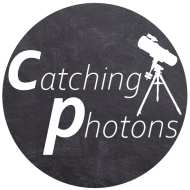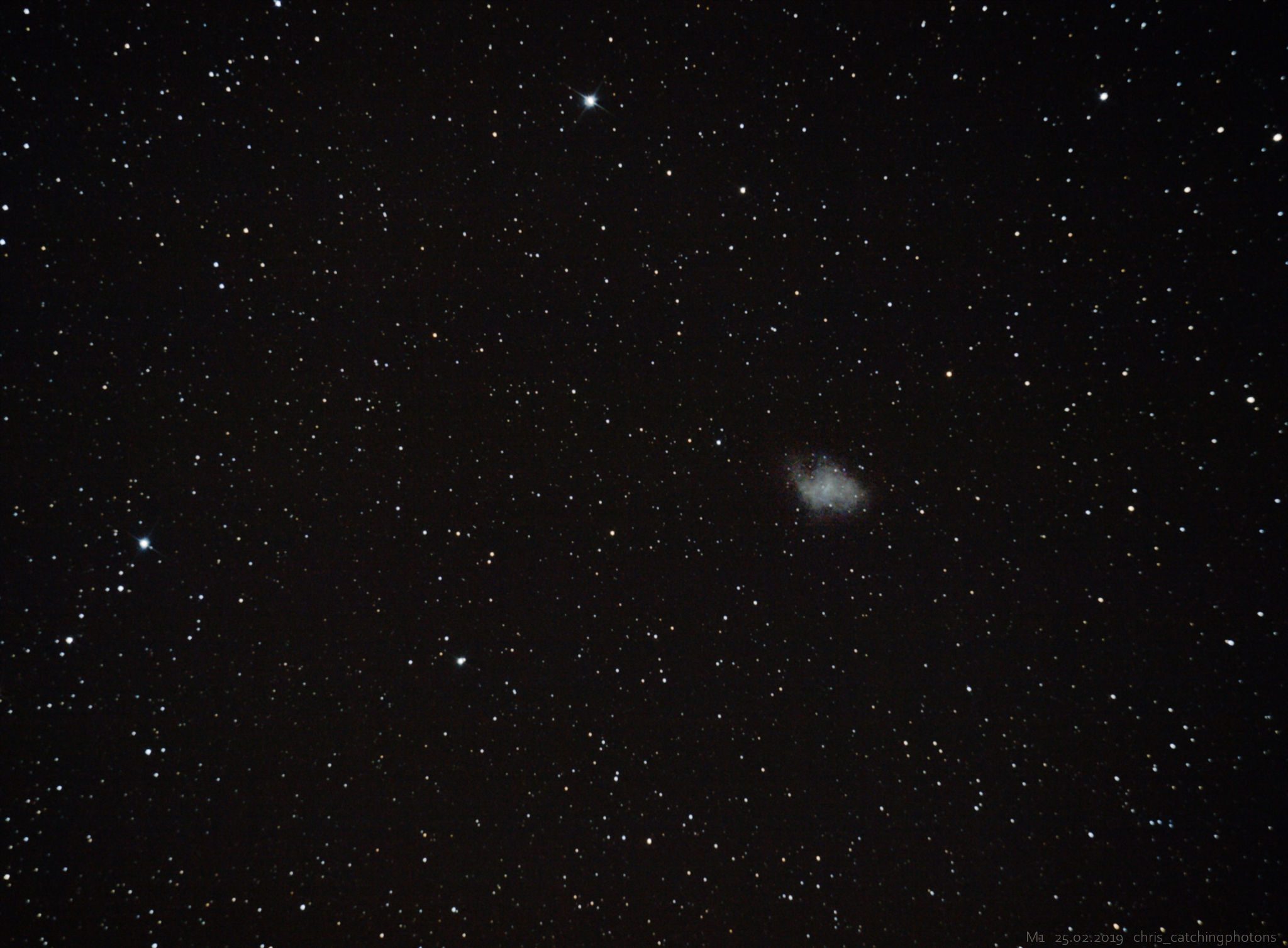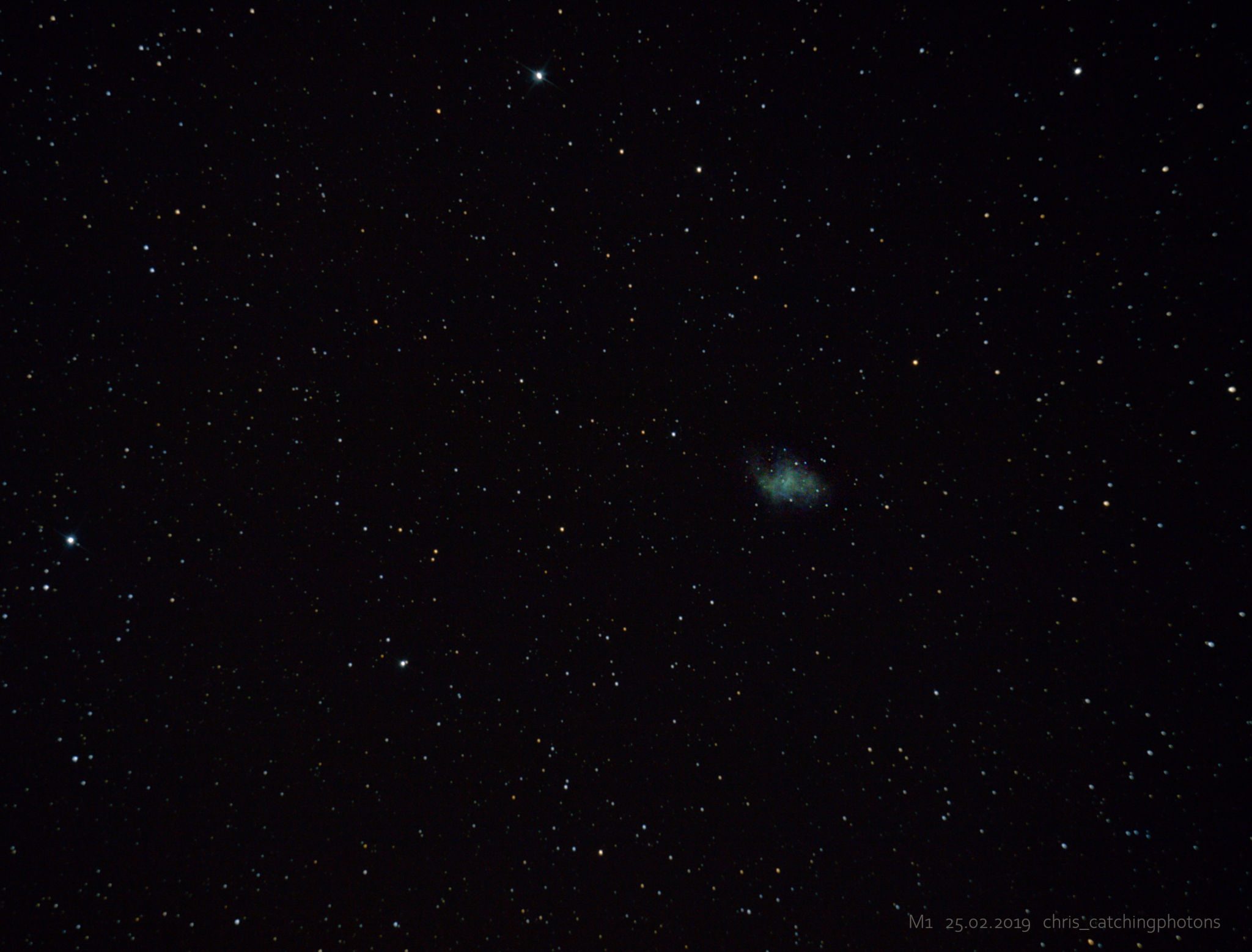25.05.2019
New aspect #1: Failed polar alignment issues
New aspect #2: Capturing an object with high ISO and low exposure time
Image acquisition:
M81: On this night I originally wanted to capture more data on M81 and M82 to increase the quality of this image by a factor. So I set up my rig as usual:
- level tripod and mount
- balancing scope with gear attached
- polar alignment with polar scope
- refined polar alignment procedure from skywatcher with tow given alignment stars
- one star alignment close to the target
- find the target
- start the session
The session setting was same same as last time. ISO400 with 50sec subs to match the light subs of last session.
Then it happened:
My initial frames I checked were good but after half of the night I reviewed the light frames taken so far and to my bad surprise they were all way off with polar alignment. Star stripes on every! single! frame! I was so frustrated. The setup procedure of this night seemed to have worked flawless and then that! No usable light frame at all! It was super annoying.

I had recognized before that the Skywatcher procedure highly depends on the chosen alignment stars.
During the alignment refinement procedure the mount reports the current estimated alignment error. That number varies from star to star. So choosing star A can lead to a lower given alignment error then when choosing star B without touching the setting. So that’s odd and can be frustrating because you can’t relay on the given error. Though I like to add that this procedure is GREAT for everyone without proper view on Polaris and might be the only chance for them to quickly align their scopes.
M1:
So annoyed of the results with M81 I turned the mount to a random DSO object the mount handheld would give me. It turned out to be M1 (the crab nebula). Alignment was still off and stars were still stripes. So I reduced the exposure time down to 20sec to get my pin point stars. To actually see the object I switched to ISO1600. That doesn’t sound much but is the highest possible ISO setting on my DSLR and therefore super (!) noisy. This is a single frame from M1:

My goal was to compensate for the short exposures by taking many subs. Stacking should then get rid of most of the noise and thereby I might be able to see some details in M1.
Image processing:
To processing M1 was a matter of stacking all the 108 subs and stretching the image. The image is rather noisy BUT I was able to highlight first small details in M1. Not much and certainly not pretty but a lot of stars show up – it’s a quite busy part of the sky – and the DSO is quite distinguishable from the rest of the image. I did two versions: A rather noisy and colourless version highlighting M1 and the sheer number of stars. The second version tries to highlight the star colours. Unfortunately M1 is rather green and rather faint in this version. I definitely like the first version better, regardless of the noise.
Conclusion:
A) Check your polar alignment. For me this means, I have to find a method to get around the Skywatcher polar aligning refinement procedure as this doesn’t feed me with absolute/ constant numbers about my alignment. I heard that phd2 can do alignments with a guidecam/guidescope attached. That seems to be a good thing!
B) So partly it’s true. If you are not able to take long exposures than try lots of short exposures and high ISO numbers. It’s worth a try and stacking can really do a magical trick here! It removes noise by averaging the bunch of images. So only the constant light from stars or the objects will remain. That’s really a cool thing!
As always: Greetings and clear skies
Chris


